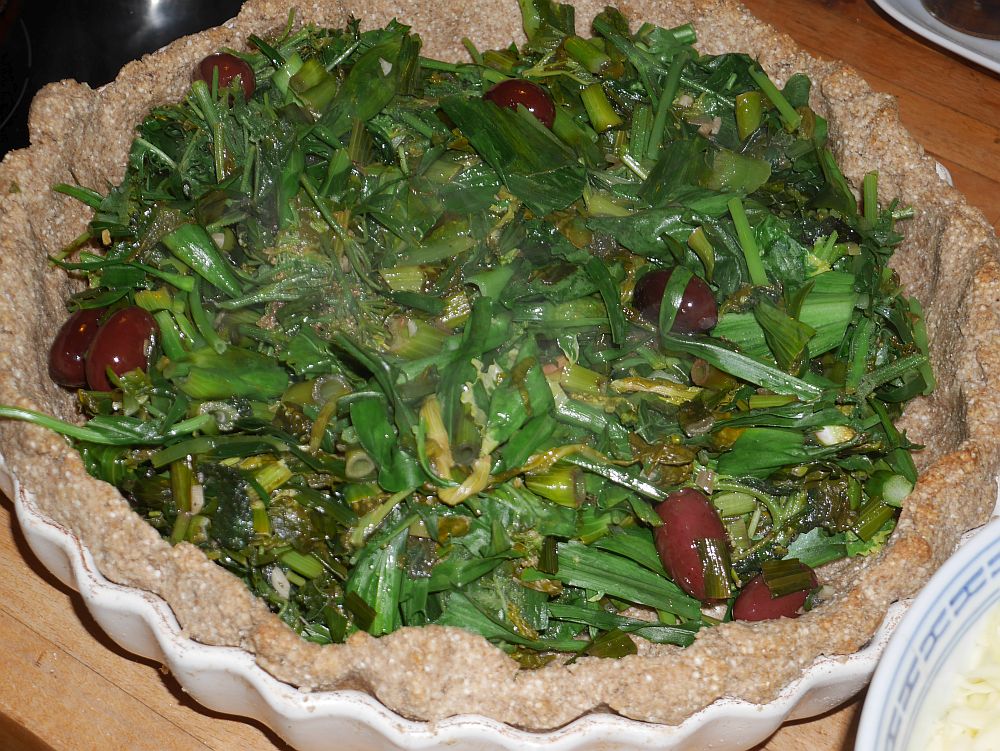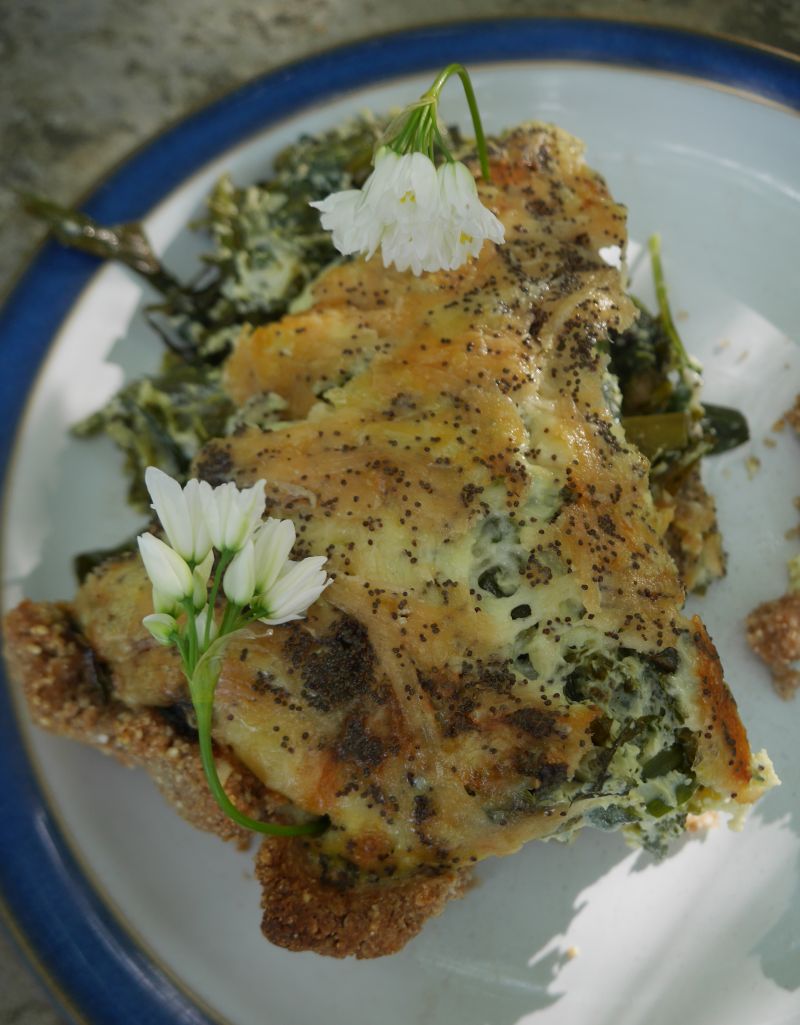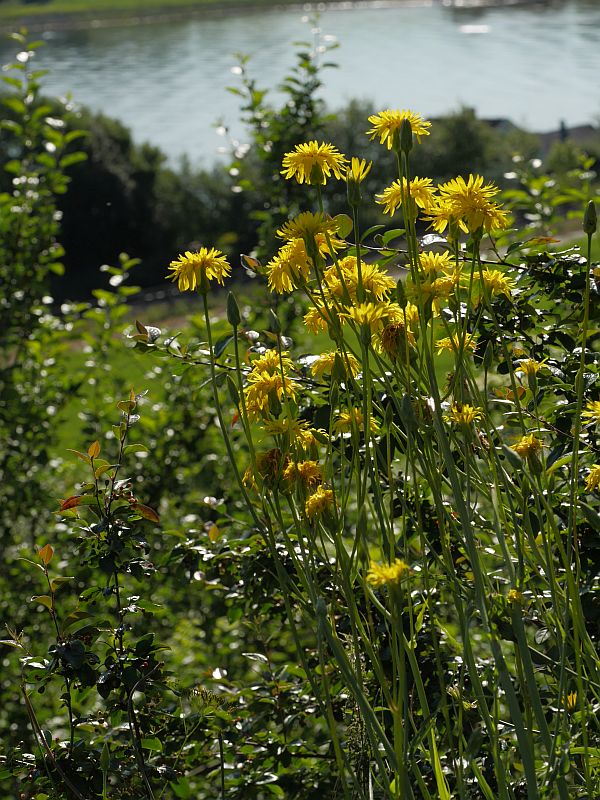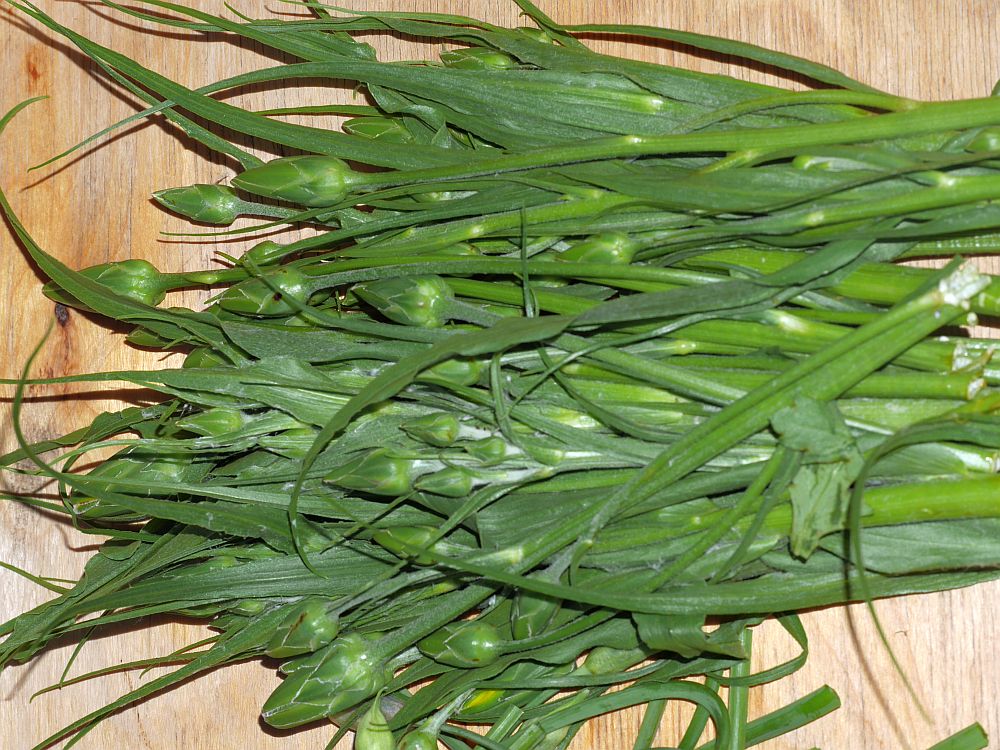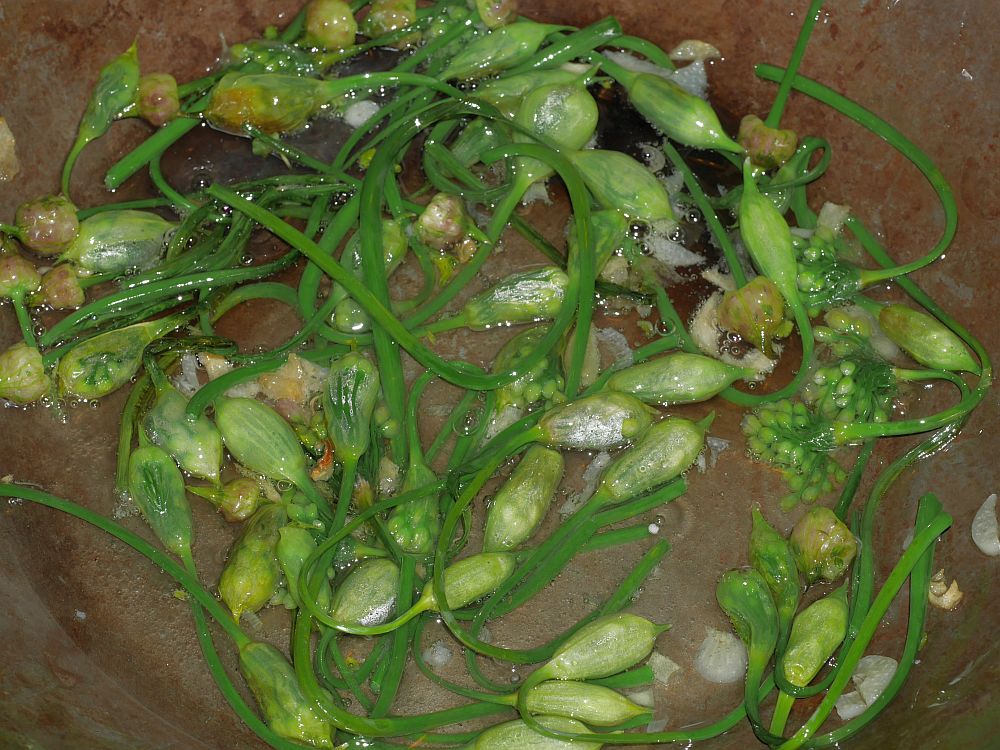This is the harvest of 6 varieties of Scorzonera at our community garden (Væres Venner) last week two years after I sowed seed (I was surprised by an early hard frost and didn’t get round to harvesting it). The following accessions
Libochovicky (Czechoslovakia) (IPK Gatersleben SCOR5)
‘Peter Schwarzer’ (IPK Gatersleben SCOR3 and SCOR 6)
‘Schwarzwurzel’ (IPK Gatersleben SCOR 7)
‘Einjaehrige ‘ (IPK Gatersleben SCOR 8)
Wild accession 1653 from Bundesgarten Wien
(I had hoped to include other varieties from the Nordic gene bank in this trial but those were sadly not available)
Einjaehrige gave as expected the biggest yield (this is a variety selected to be grown in one year…traditionally it would take two years for roots to be big enough. I will grow this one on as a perennial for seed to supply seed as a root variety. The biggest roots of the other accessions apart from the wild accesion which gave as expected the smallest roots (planted now in the World Garden) will be grown on to investigate differences in production of Scorzonera lettuce (spring shoots) and Scorzonera scapes (the sweet flower stems).
Scorzonera is not only one of my favourite must have perennial vegetables but also a popular plant for pollinators flowering right up to the first frosts.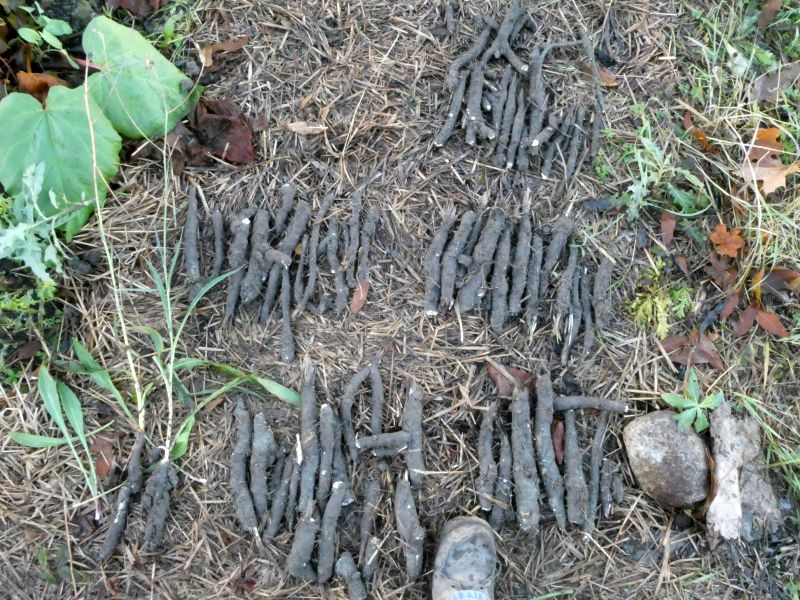
‘
Tag Archives: Scorzonera hispanica
Mallows in season #2
…and my second best mallow is the hollyhock mallow or greater musk mallow / rosekattost (Malva alcea), hardy and reliably perennial, here with perennial kale “Daubenton”, flower buds and stems of Scorzonera hispanica, Johannes’ shallot (Allium x cornutum; see https://www.edimentals.com/blog/?p=22601) and annual chopsuey greens or shungiku (Glebionis coronaria, formerly Chrysanthemum coronarium).
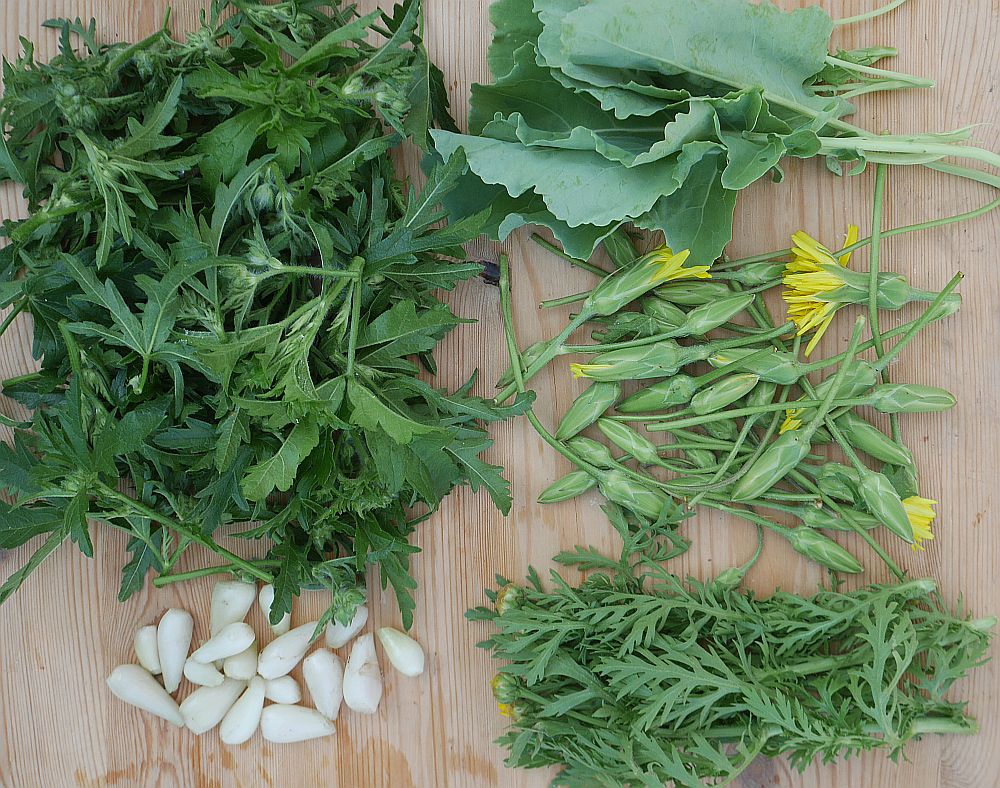
Veggie rich pie
AROUND THE WORLD IN THE EDIBLE GARDEN; Part 3 – Southern Europe and the Mediterranean countries
Inviting you to the third in a series of dinners from Malvik’s Edible Garden where we “forage” from different parts of the world!
If you’ve visited countries in south east Europe you will no doubt have eaten the delicious vegetable pies like Greek spanakopoita, Turkish börek, Italian Torta pasqualina, Bulgarian banitsa and others. Inspired by these and not wanting to make the time consuming to make filo pastry, we made a 100% wholegrain rye/barley quiche like dish with large quantities of the following perennial greens: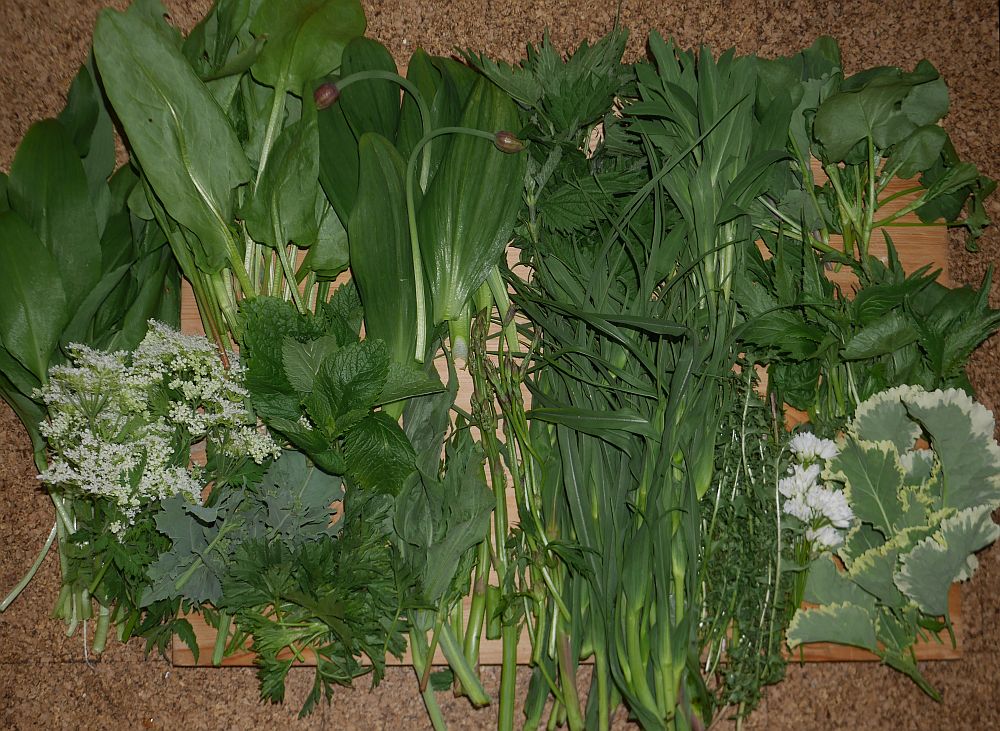
From left to right (from top left) :
Allium ursinum (ramsons; ramsløk)
Rumex patientia (patience dock; hagesyre)
Urtica dioica (stinging nettle; brennesle)
Silene vulgaris (bladder campion; engsmelle)
Rumex scutatus (Buckler-leaved sorrel; Fransksyre)
Rumex acetosa (sorrel; engsyre)
Myrrhis odorata (sweet cicely; Spansk kjørvel)
Malva alcea (hollyhock mallow; rosekattost)
Melissa officinalis (lemon balm; sitronmelisse)
Scorzonera hispanica (Scorzonera; scorsonnerot, svartrot)
Asparagus officinalis (asparagus; asparges)
Humulus lupulus (hops; humle)
Tragopogon pratensis (Jack-go-to-bed-at-noon; geitskjegg)
Taraxacum “Moss-leaved dandelion”
Campanula trachelium (nettle-leaved bellflower; nesleklokke)
Brassica oleracea “Daubenton variegated” (perennial kale; flerårige kål)
Allium zebdanense (white flowers) from Lebanon
(with garlic and chili and imported olives)
Om Scorzonera: en hardfør helårs grønnsak
Skorsonerrot, svartrot, jordskonnerot eller bondeasparges Scorzonera hispanica er en av de nye rotgrønnsakene som har kommet til Norge de siste årene. De fingertykke røttene med hvitt fruktkjøtt serveres på de beste gourmetrestauranter. Men, dette er en grønnsak som har vært dyrket her til lands helt siden 1600-tallet. Dyrket som flerårig grønnsak kan planter bli gammel (minst 50 år pluss) og alle plantedelene kan spises fra vår-rosettene til de søte blomsterstengelene, blomsterknopper og kronblad. Jeg har tidligere skrevet artikler om denne planten både i Våre Nyttevekster i 2012 og i min bok Around the World in 80 plants fra 2014. Dette er en “må-ha” grønnsak i min hage!
De siste årene har det kommet frem mye nytt om denne planten og slektningene i den etnobotaniske litteraturen. Derfor tenkte jeg at det var på tide å oppdatere tidligere artikler og resultatet finner dere nedenfor (på norsk)! Jeg håper det faller i smak!
Om du kjenner til en gammel scorsonerrot plante, ta gjerne kontakt!
Takk til Landbruksdirektoratet som har støttet dette arbeidet gjennom prosjektet «Kartlegging – innsamling- dokumentasjon og vurdering av genetisk mangfold av spiselige planter i Norge»
Takk også til Guri-Kristina Batta Bjørnstad for korrekturlesing og faglige kommentarer!
English Summary: Scorzonera hispanica is one of the new root vegetables that has come to Norway in recent years. The finger-thick roots with white flesh are served at the best gourmet restaurants. However, this is a vegetable that has been cultivated here in Norway and elsewhere in Europe since the 17th century. Grown as a perennial vegetable, plants can grow old (at least 50 years plus) and all plant parts can be eaten from the spring rosettes to the sweet flower stems, flower buds and petals. I have previously written articles about this plant both in the Norwegian Useful Plants Society journal Våre Nyttevekster in 2012 and in my book Around the World in 80 plants from 2014. This is a “must-have” vegetable in my garden!
In recent years, much new information has emerged about this plant and its relatives in the ethnobotanical literature. Therefore, I thought it was time to update previous articles and the result can be found (in Norwegian) in the link! There is a comprehensive table in the article which is in English summarising the traditional use of this plant in Europe! I hope to translate this into English when I get more time….


